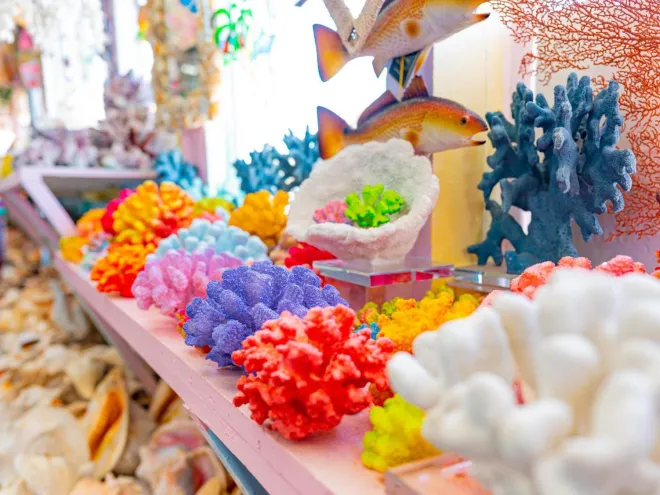Your Shelling Guide to St. Pete-Clearwater
Calling all shell-seekers! We've got tips on where to find shells, info on shells you might find and more.
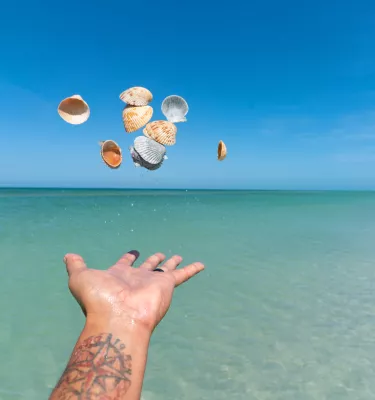
Find sand dollars and rare shells along the sparkling shores of undeveloped Shell Key.
"What are your top tips for finding shells?"
Come Early (Really Early): The early bird gets the shells, it's true. Come as soon as the sun is up, or as soon as you can, to find more shells.
Come at Low Tide: The beach is exposed at low tide, making it easier to find shells. See the NOAA tide chart here.
Come After a Storm: Windy weather and storms sometimes wash rare or large shells from the sea bed onto the beach.
Come Prepared: Bring mesh bags or shell buckets; sunscreen and a hat; plenty of water and snacks; a small scoop or rake; and water shoes in case you are in an area with many shells, where it might be uncomfortable to be barefoot.
Tours & Trips to Find Shells
These tours and trips will take you to some of the best shelling spots in St. Pete-Clearwater!
See all nature toursWade Right In
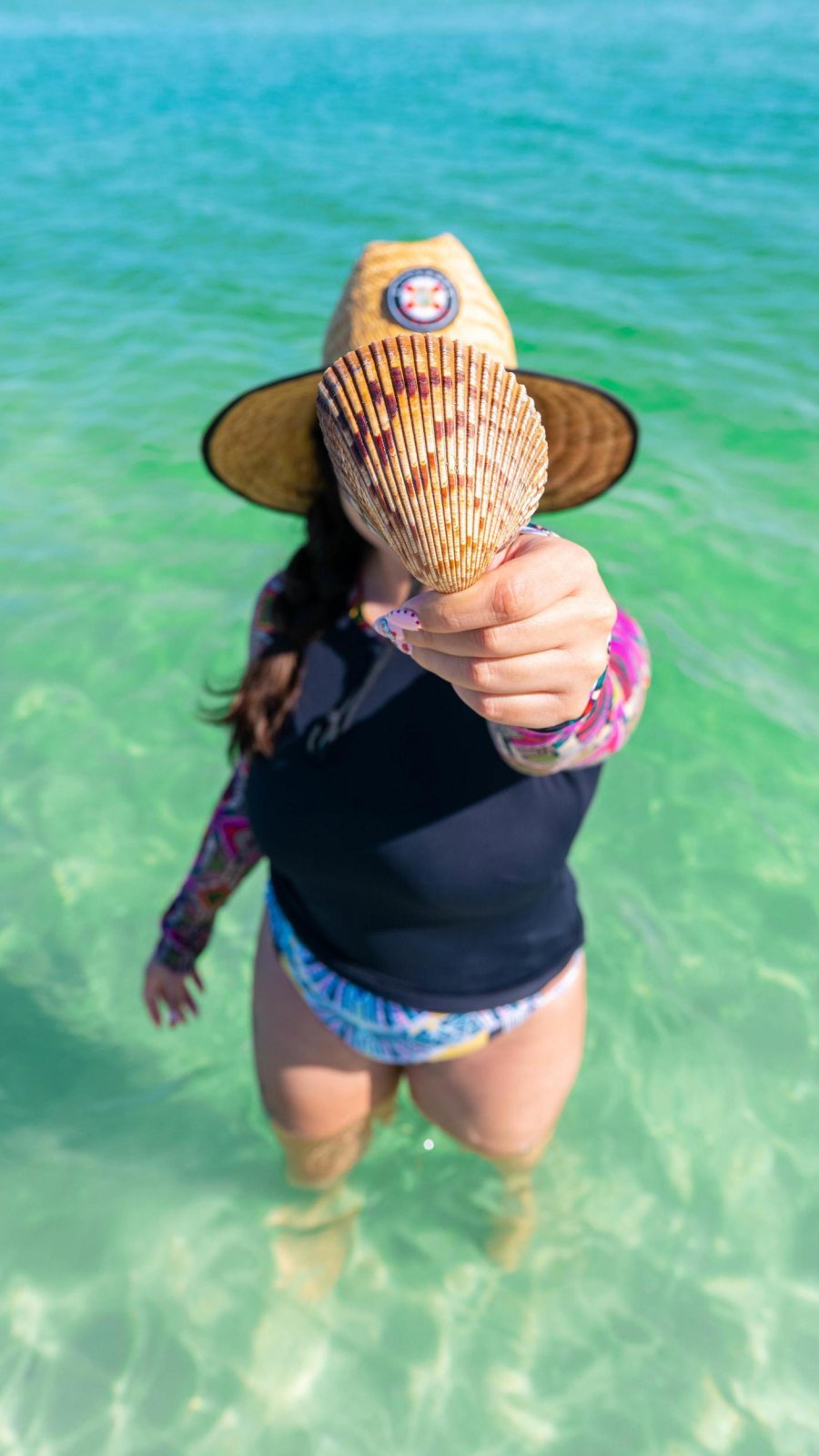

Our clear waters are perfect for spotting shells, if you're willing to wade right in.
Our clear waters are perfect for spotting shells, if you're willing to wade right in.
"How can I be a responsible shell collector?"
Only take empty shells: Many beautiful shells are still occupied by live creatures, and collecting live shells is illegal and detrimental to the environment. It's important to inspect your shells on the spot. If you discover a live animal, gently return it to the water (ideally, in several feet of water).
Only take something that's new to your collection: If you've already collected a particular shell, consider leaving this one behind for someone else.
Don't take any sand dollars if they’re fuzzy or brown/green: Sand dollars in this condition are still alive and should be returned to the water. Only take sand dollars that are smooth and white. (See our photos on this page to learn the difference.)
Check local regulations and park rules ahead of your visit: Some of our shelling locations, such as Shell Key Preserve, restrict what areas humans can enter.
Get your feet wet: You may need to wade in to find shells.
Do the "shellers' shuffle": Use your feet to gently move the sand in shallow surf. This may help you find buried shells with your toes, while avoiding stingrays that sometimes are in the sand (they will swim away).
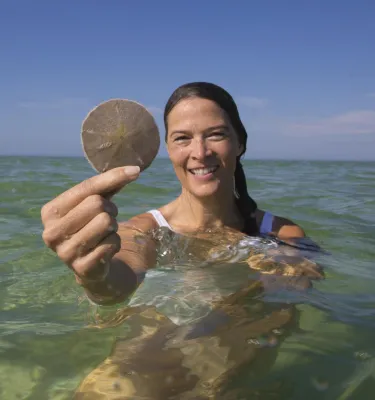
Live sand dollars are brown, green or dark gray (and often fuzzy). Please return them to the water immediately.
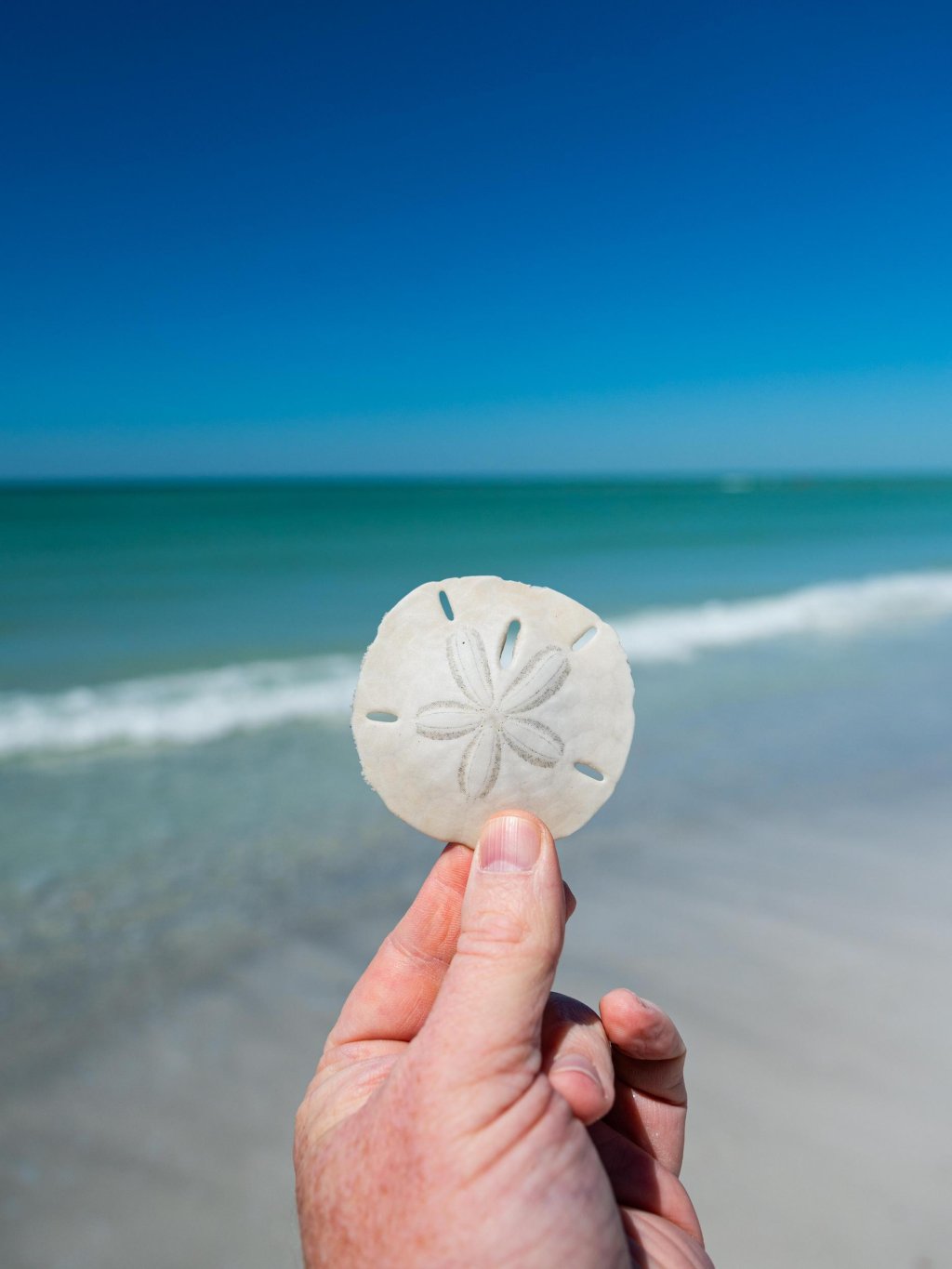
Expired sand dollars are smooth and white or very light gray. These are ok to keep.
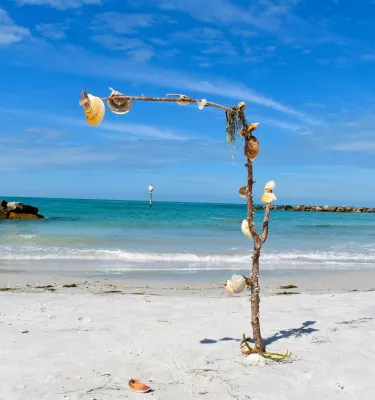
You might see "wish trees" on our beaches (this one was at Upham Beach). Add a shell to the tree and make a wish!
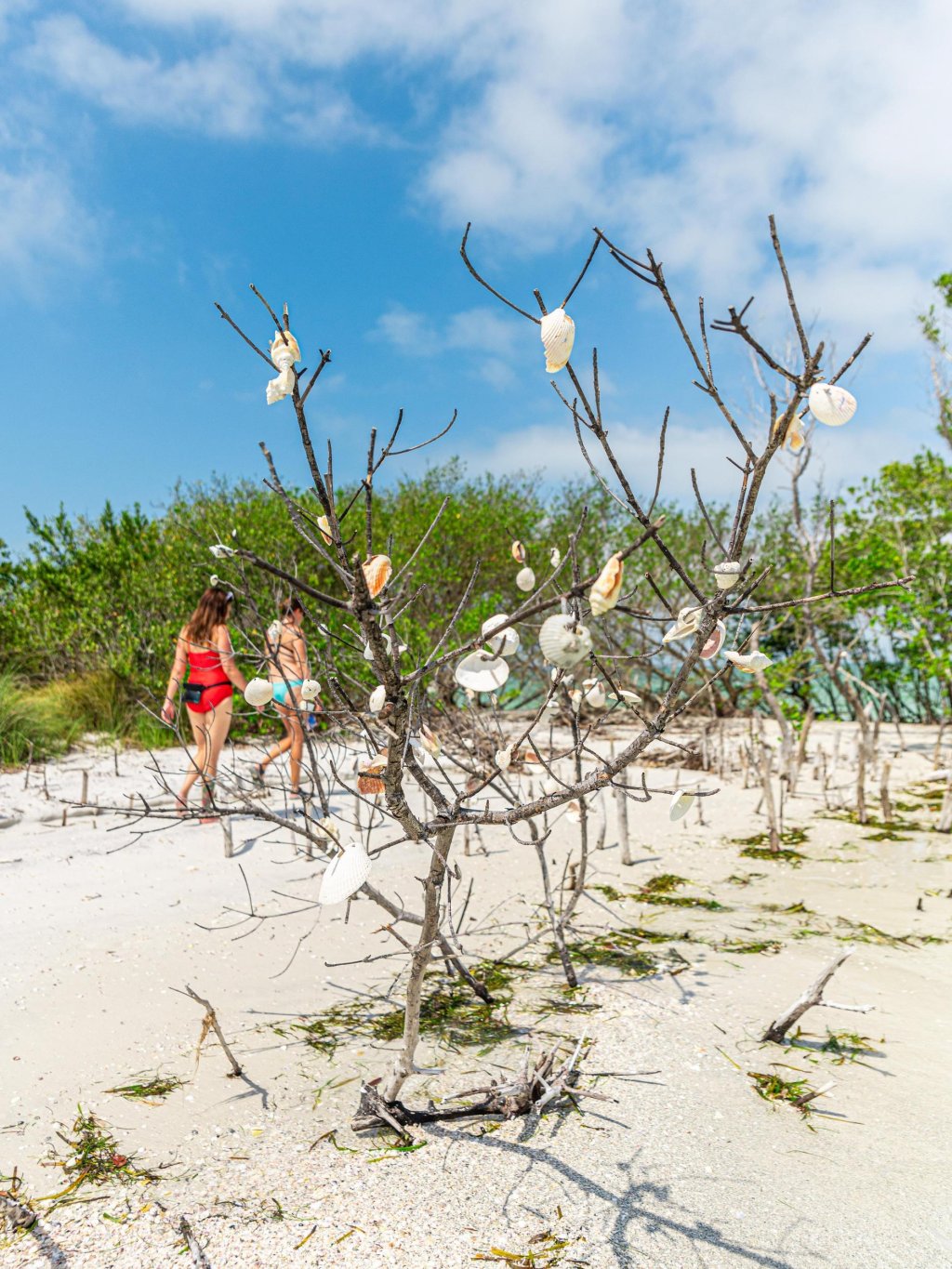
This "wish tree" was photographed at beautiful Shell Key Preserve.
Video: The Early Bird Gets the Shells!
Watch this short video to get a glimpse at the shells you might find on our beautiful beaches.

